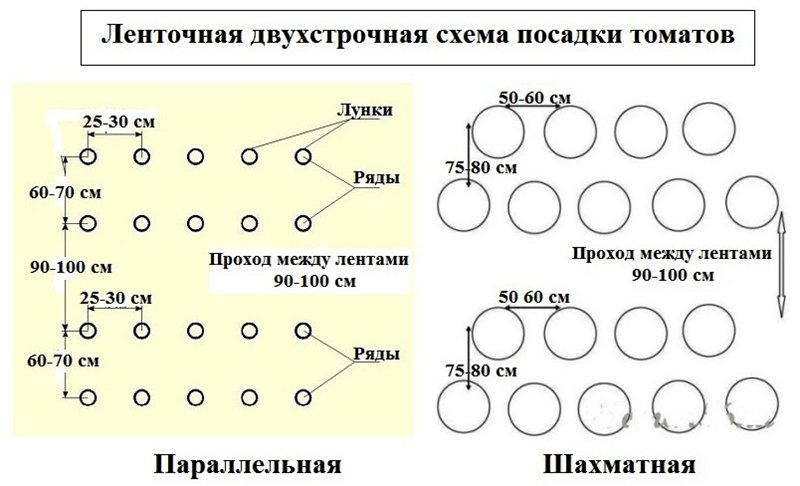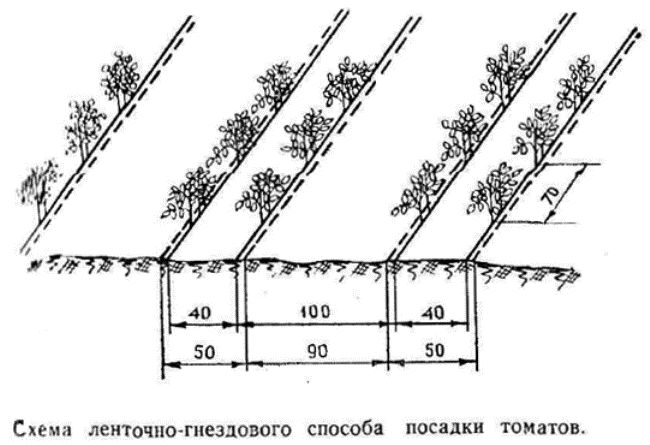How to properly plant tomatoes in open ground
Content
Disembarkation dates
Since we know that a tomato is a thermophilic plant, the time when you can plant tomatoes in open ground is determined by atmospheric phenomena and weather. That is, as soon as the soil has warmed up a little, and there are no frosts at night, the seedlings can be planted. Usually May is the month when tomato planting becomes possible. The second half of the month or the beginning of the next one is best suited for disembarkation.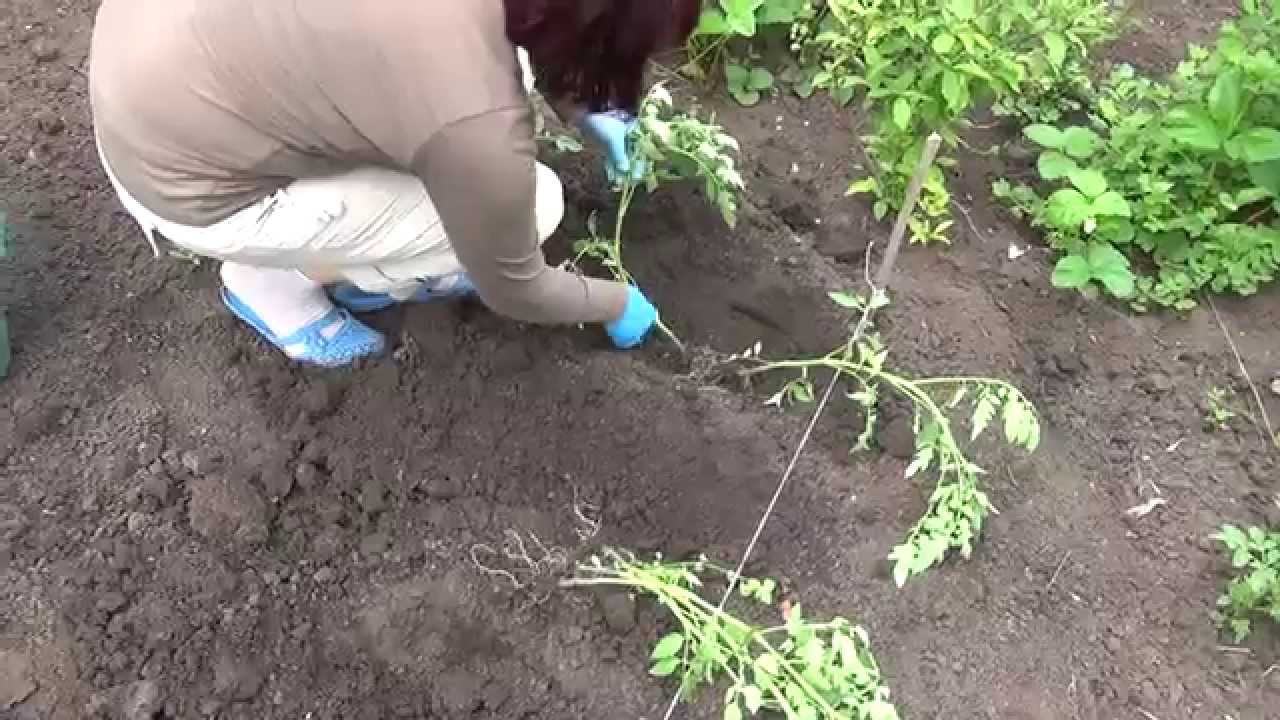 But still, before planting seedlings, it is worth knowing its variety and planting features. In addition, the climate of the area where tomatoes are planted has a great influence on the timing of planting. So, for example, in some localities it is possible to plant tomatoes already in February, because there is a milder and warmer climate, but in places such as Siberia and the Urals, you can plant vegetables not earlier than mid-March, or even at the beginning of April, if you want. get a harvest of tasty and healthy tomatoes.
But still, before planting seedlings, it is worth knowing its variety and planting features. In addition, the climate of the area where tomatoes are planted has a great influence on the timing of planting. So, for example, in some localities it is possible to plant tomatoes already in February, because there is a milder and warmer climate, but in places such as Siberia and the Urals, you can plant vegetables not earlier than mid-March, or even at the beginning of April, if you want. get a harvest of tasty and healthy tomatoes.
It is worth noting that it is better to plant seedlings in the afternoon for the reason that by the evening the soil warms up well, and the tomato will have a whole night ahead to absorb the heat and get stronger.
Landing patterns
Tomatoes are planted according to schemes that usually depend on the variety, height and irrigation system used in your garden. There are several planting schemes, but the main thing should still be the fact that there should be a short distance between the bushes for sufficient air and sunlight to enter.
Square-nested
This tomato planting scheme is suitable for tall varieties of vegetables, where row spacing is of particular importance, which helps to keep the open soil loose and clear of weeds.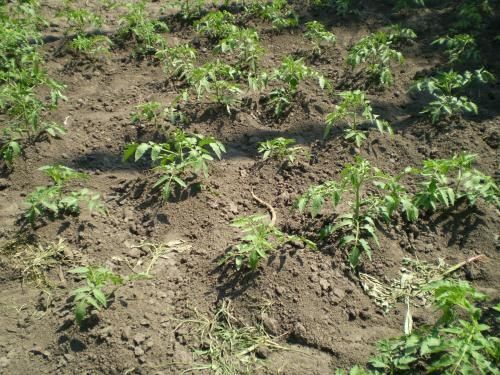 This scheme involves planting a tomato in the corners of a square, thus reducing the number of plants in a row. In order not to plant too few plants in a row and, accordingly, not to reduce their number per hectare, planting is carried out as if in a "nest", ie. two or three plants are planted next to each other. Such planting allows to reduce the amount of processing time for rows with tomatoes by 10-20 working days and reduce labor costs by almost half. But the most important advantage of such a planting scheme is an increase in the amount of yield due to timely inter-row processing of bushes. That is why this method is one of the most popular among gardeners, because it allows you to mechanize the processing of vegetables and makes it possible to carry it out in two directions.
This scheme involves planting a tomato in the corners of a square, thus reducing the number of plants in a row. In order not to plant too few plants in a row and, accordingly, not to reduce their number per hectare, planting is carried out as if in a "nest", ie. two or three plants are planted next to each other. Such planting allows to reduce the amount of processing time for rows with tomatoes by 10-20 working days and reduce labor costs by almost half. But the most important advantage of such a planting scheme is an increase in the amount of yield due to timely inter-row processing of bushes. That is why this method is one of the most popular among gardeners, because it allows you to mechanize the processing of vegetables and makes it possible to carry it out in two directions.
Ribbon-nesting
The tape-nesting scheme allows you to plant more bushes in one area than the square-nesting scheme. The advantage of this planting pattern is that close-planted tomatoes can better withstand weather conditions. In this method, the soil is cut into irrigation furrows every 140 centimeters, and the bushes themselves are planted on both sides of these furrows.It is also worth noting that, ideally, a tomato during growth develops in the limit of 0.3 square meters. Therefore, for good growth, each bush needs to be given its own space.
This planting of vegetables also allows for mechanized bushes cultivation and weed removal.
Preparing for landing
About a week before the time you are going to plant tomatoes, it will be correct to process the soil and prepare it for receiving seedlings. Usually the soil is treated with copper sulfate, other fertilizers are applied and the soil is fertilized, if any other vegetables grew on this soil earlier.  Also, the soil should be dug up before planting the vegetable in order to open the soil to oxygen and sunlight. Then holes are made according to the scheme that was chosen, and they are watered with warm water. To choose the right depth of the hole, you should pay attention to the height of the bush, and, if necessary, deepen only the soil bag.
Also, the soil should be dug up before planting the vegetable in order to open the soil to oxygen and sunlight. Then holes are made according to the scheme that was chosen, and they are watered with warm water. To choose the right depth of the hole, you should pay attention to the height of the bush, and, if necessary, deepen only the soil bag.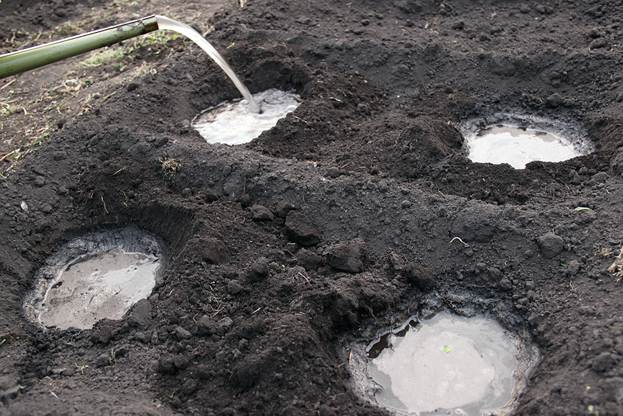 Also, before planting a tomato, you should take care of the readiness of the tomato garter peg in the future. The tomato itself must be watered abundantly before planting, so removing it from the pot will become easier and not a single element of the root system will be damaged.
Also, before planting a tomato, you should take care of the readiness of the tomato garter peg in the future. The tomato itself must be watered abundantly before planting, so removing it from the pot will become easier and not a single element of the root system will be damaged.
We plant tomatoes
When the soil is ready for planting a tomato, the seedlings are very carefully removed from the container in which it has been growing all this time, it is very important not to disturb the earthen lump formed around the root system of the bush, then the bush is vertically lowered into the hole, which must be opened before lightly sprinkle with earth. You can sprinkle some compost around the planted bush so that the plant gets the nutrients immediately and takes root better.
Sprinkle the compost with soil again and compact the soil around the bush a little. After that, water each bush using a liter or two of water for each. After the bush is planted, you need to install a peg next to it, the height of which will depend on the variety of tomato, for example, for low-growing tomatoes, the pegs can be 50 cm high, but for medium-sized tomatoes, the height of the peg should be about 80 cm.
A more effective method is to tie tomatoes not to pegs, but to an arc and wire about 1 meter high.
Care after landing
After you have managed to plant all the tomato bushes, it will be correct not to water them until the seedlings take root. Adaptation takes place from 8 to 10 days and only after that the watering period can be opened. It is necessary to water the bushes at the root, avoiding the ingress of liquid on the leaves, this can lead to tomato disease. It is also undesirable to water the tomatoes with the help of rain, because although the plant receives the necessary moisture, at the same time the temperature decreases and the humidity of the air rises, which tomatoes do not like very much.
It is worth watering vegetables in the second half of the day - in this way it is the roots that will absorb all the liquid and it will not evaporate. What can not be said about watering tomatoes in the morning. Also, do not water them too often, especially before the fruit sets, you just need to open the soil to moderate moisture, but try not to flood it. But after the fruit begins to grow, tomatoes need more water. During this time, watering should be increased in order to maintain the moisture level in the soil at the same level.
It can also happen that individual bushes begin to wither. The reason for this may be an insufficient amount of sunlight, which is not detrimental to the vegetable. Therefore, you should not pull out or cut the bush, if it has begun to fade a little, you do not need to water it too much either. If possible, then you can try to open a little space so that more light comes to this bush. In a few weeks, the bush will come to life again, and the tomatoes will take on a healthy look, and you will not be deprived of a crop.
After you have watered the bush, you should loosen the soil around it and remove the weeds. The depth of loosening should be about 8-12 cm in order to open up a good oxygen saturation for the roots and warm the soil. In the future, the depth of loosening is reduced to 4-5 cm. It is worth being very careful with this stage of processing tomatoes, because soil compaction can lead to damage to the root system. It is also worthwhile to devote time to hilling a tomato, at least two to three times a season. This will saturate the soil with oxygen, ensure the development of the root system and good nutrition of the plant, and during hilling, grooves are formed in the soil that retain water longer, which ensures regular soil moisture.
It is also worthwhile to devote time to hilling a tomato, at least two to three times a season. This will saturate the soil with oxygen, ensure the development of the root system and good nutrition of the plant, and during hilling, grooves are formed in the soil that retain water longer, which ensures regular soil moisture.
After planting, tomatoes should be fed from time to time. In total, for the entire period of plant growth, four stages of feeding must occur.
The first occurs three weeks after transplanting, the second after the second flower cluster begins to bloom, and the third when the third flower cluster blooms. The last dressing is usually done three weeks after the third dressing.
When planning to plant tomatoes, remember that planting tomatoes outdoors is not easy. This process is stressful both for the plant itself and for the gardener, therefore it is worth having patience and applying as much energy as possible, following all the rules for caring for this capricious vegetable, and then a rich harvest will not be long in coming.
Video "Secrets of growing tomatoes in the open field"
In the video, experienced vegetable growers talk about how to properly plant tomatoes in open ground, what fertilizers to fertilize them with and how to tie up tomatoes.

